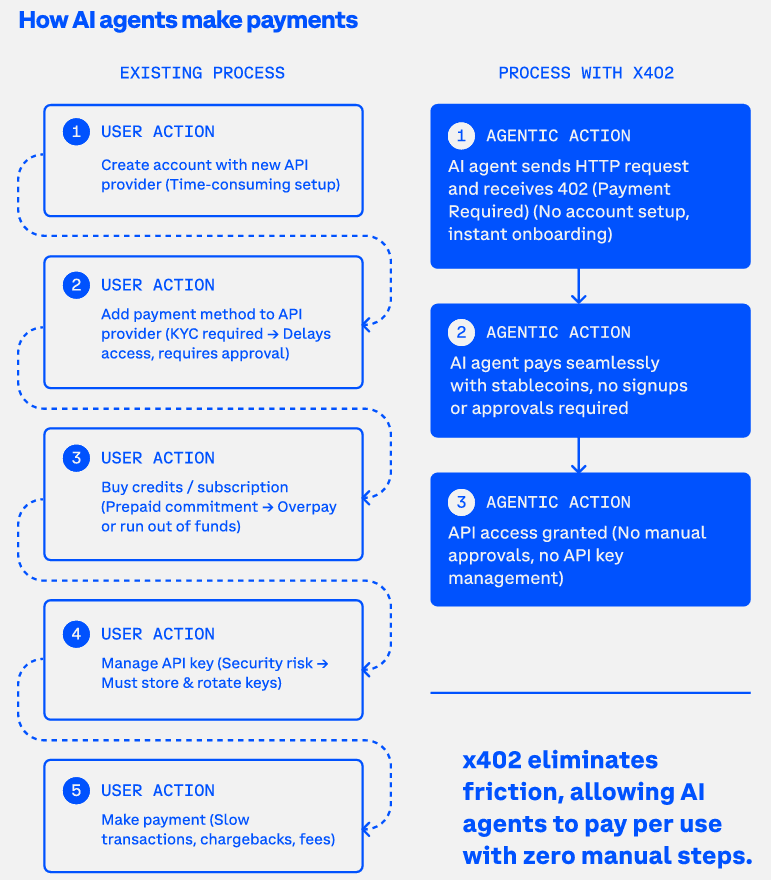The AI Agent Payment Problem
Understanding why AI agents need a new payment paradigm and how x402 enables autonomous commerce.
Introduction
AI agents face a fundamental problem: traditional payment systems require human verification and account management, making autonomous machine-to-machine commerce impossible.
Why Traditional Payments Block AI Agents
AI agents cannot participate in traditional payment systems for several critical reasons:
- Can't Create Accounts: signup flows require human verification (CAPTCHA, email, phone) and KYC processes that AI agents cannot complete
- Can't Handle Micropayments: transaction fees make small payments economically infeasible when fees exceed the payment amount itself
- Credential Management Risks: storing API keys and payment credentials creates security vulnerabilities and compliance challenges across services
- Limited Autonomy: pre-approved payment methods and spending limits require human authorization, defeating autonomous agent operation
What AI Agents Need
For AI agents to participate in the digital economy, they need:
- Instant, Permissionless Access: No account creation, KYC verification, or identity requirements
- Pay-Per-Use Pricing: No monthly subscriptions or minimum commitments
- Autonomous Payment Execution: Agents pay without human intervention
- Micropayment Support: Economically viable payments of any size, including fractions of a cent
- No Credential Management: Direct payment without managing API keys or sensitive tokens

How x402 Solves This
The x402 protocol addresses these challenges through:
- HTTP-Native, No Accounts: Payment requests work through standard HTTP without requiring account creation or identity verification
- Instant Micropayments: Ultra-low transaction costs and ~2-second settlement make payments of any size economically viable
- Fully Autonomous: Agents pay automatically based on HTTP 402 responses with no human intervention or credential storage
Is this guide helpful?
